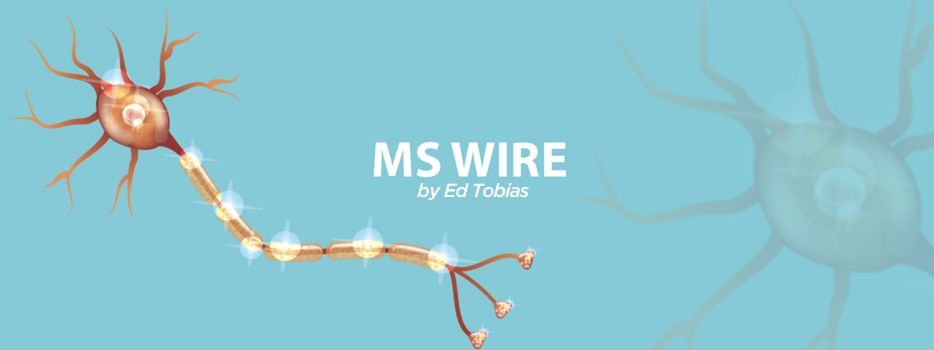MS News That Caught My Eye Last Week: POMS and Sunshine, Music Therapy, Tysabri, Socioeconomic Status
Written by |

Stories marked #ACTRIMS2021 are by members of the Multiple Sclerosis News Today team, who reported on this annual conference of MS researchers, held virtually this year due to COVID-19.
#ACTRIMS2021 – 30 Minutes in Sun Each Day Lowers MS Risk in Children
Can it really be this easy? Spend half an hour a day in the sun as a child and reduce your risk of pediatric onset MS by more than 2.5%? It seems too simple to be true, but these researchers say their results may have to do with vitamin D, which has been shown to reduce MS risk in adults.
Spending more time in the summer sun and living in generally sunnier places appears to provide protection against pediatric-onset multiple sclerosis (MS), an international team of scientists reported.
Spending at least 30 minutes outdoors in sunlight each day is associated with a significantly reduced risk of childhood MS, the team said.
Click here to read the full story.
***
MS in Harmony Is First Digital Music Therapy for MS Patients
Music therapy has been used for years to treat people with central nervous system disorders such as MS. Now, this therapy is available to you at home from the website www.msinharmony.com. The site has a ton of music therapy information and dozens of videos divided into three groups: body, mind, and soul. Additionally, music therapists guide a wide selection of exercises. There’s also dance, meditation, and even a video that helps users create sleep-enhancing playlists. The website is worth a look and listen, but be forewarned, there’s so much info it can be a little overwhelming.
Bristol Myers Squibb (BMS) and the American Music Therapy Association (AMTA) are partnering with singer and actor Ben Platt, and dancer, choreographer and actor Courtney Platt, to launch MS in Harmony, the first digital music therapy for patients with multiple sclerosis (MS).
“We’re thrilled to have the chance to share music therapy with the MS community through MS in Harmony,” Tina Deignan, PhD, said in a press release. Deignan is senior vice president and U.S. business unit head for immunology at BMS.
Click here to read the full story.
***
Switch From Tysabri to Moderate-efficacy DMTs Linked to Worse Disability
I switched from Tysabri (natalizumab) to Aubagio (teriflunomide) several years ago, moving from a high efficacy treatment to a moderate one. At the time, the high-efficacy treatment Ocrevus (ocrelizumab) wasn’t yet available, and Lemtrada (alemtuzumab) was relatively new, so I was reluctant to switch to it. I spent about 18 months being treated with Aubagio. It made sense at the time, because as a pill, it fit my lifestyle and was covered by my insurance. I’m not surprised at the results of this study, and I’m pleased that my progression didn’t seem to change much while I was using Aubagio. But sometimes, more elements need to be considered than just efficacy. Eventually, I moved up to Lemtrada.
Patients with multiple sclerosis (MS) switching from Tysabri (natalizumab) to moderate-efficacy disease-modifying therapies (DMTs) are at a higher risk of showing signs of MS activity and experiencing disability progression than those switching to high-efficacy DMTs, a real-world study found.
Based on these findings, the researchers are arguing that, when possible, MS patients should be started on high-efficacy DMTs when switching from Tysabri.
Click here to read the full story.
***
#ACTRIMS2021 – Better Strategies Needed to Help Socioeconomically Disadvantaged Patients
This article notes that “previous research has demonstrated that less socioeconomically advantaged MS patients tend to have greater disability. However, the relationship between socioeconomic status and nervous system damage in MS has been less clear.” I have to ask, what’s the point? If we already know that someone’s socioeconomic status affects the level of MS disability, do we need a separate study looking at its impact on central nervous system damage? The story concludes: “Collectively, the findings highlight the need for better strategies to help socioeconomically disadvantaged people with MS.” I strongly agree, but I don’t see what this study added to further this objective. Do you?
People with multiple sclerosis (MS) who are less socioeconomically advantaged tend to have faster rates of nervous system damage, new research suggests.
The findings were presented Feb. 25 at the virtual Americas Committee for Treatment and Research in Multiple Sclerosis (ACTRIMS) Forum 2021, in the presentation “Socioeconomic Disparity Correlates with Faster Inner Retinal Layer Thickness in Multiple Sclerosis,” given by Eleni Vasileiou, MD. Vasileiou is a postdoctoral researcher at Johns Hopkins University School of Medicine in Baltimore, Maryland.
Click here to read the full story.
***
Note: Multiple Sclerosis News Today is strictly a news and information website about the disease. It does not provide medical advice, diagnosis, or treatment. This content is not intended to be a substitute for professional medical advice, diagnosis, or treatment. Always seek the advice of your physician or other qualified health provider with any questions you may have regarding a medical condition. Never disregard professional medical advice or delay in seeking it because of something you have read on this website. The opinions expressed in this column are not those of Multiple Sclerosis News Today or its parent company, Bionews, and are intended to spark discussion about issues pertaining to multiple sclerosis.






Leave a comment
Fill in the required fields to post. Your email address will not be published.